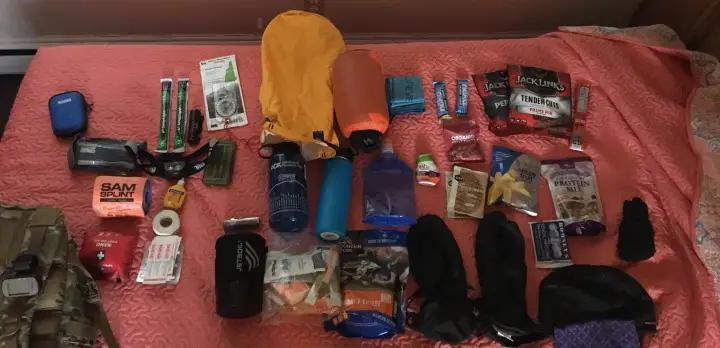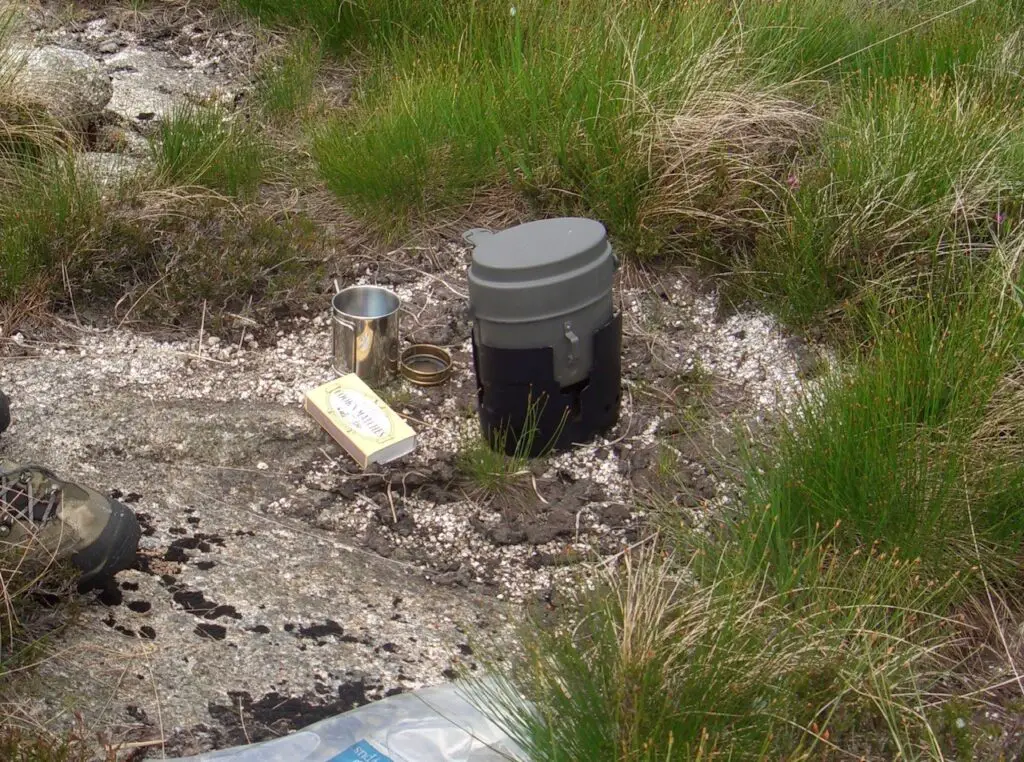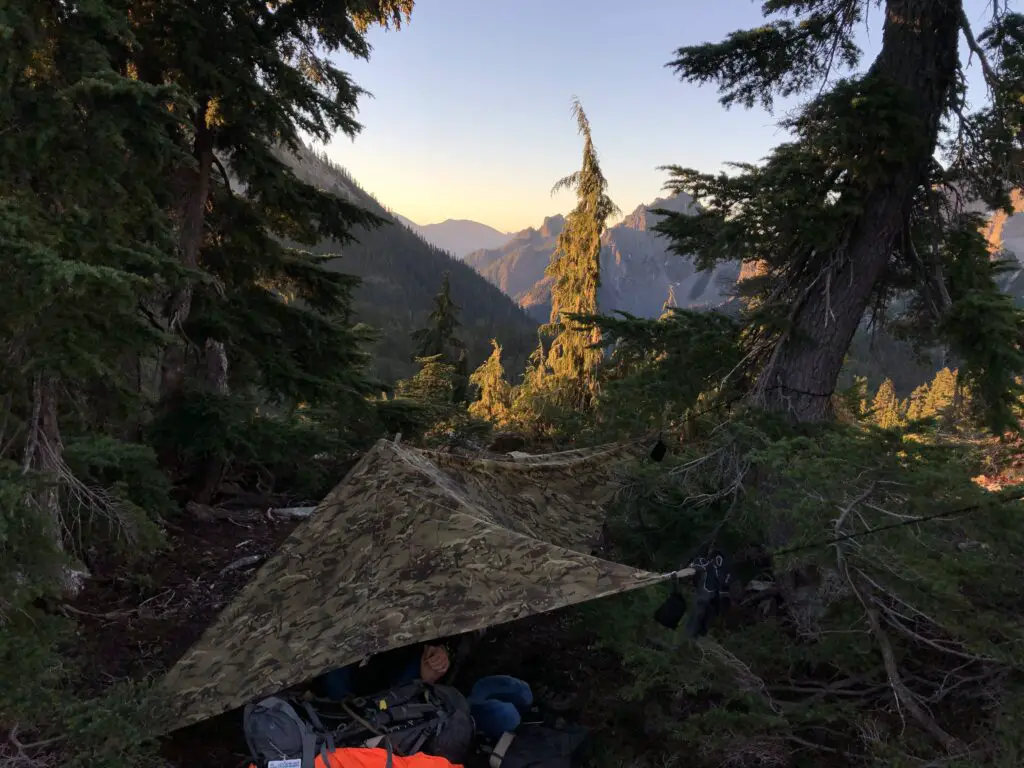How can I reduce my backpacking pack weight for hiking
Simple tips to minimize your gear and cut the overall weight of your rucksack
On one of my earliest hiking trips I recall that I carried entire spare outfits, a heavy old Swedish army camping stove, at least one saucepan, and a two-man tent that weighed several kilos. Unsurprisingly, the thing I remember most about that trip is the overwhelming struggle, how heavy my pack was, and ways of reducing a good deal of the weight. I’ve learnt, adapted, and improved since then but being able to reduce pack weight is a process, not a one-off change, and even now I’m constantly looking for ways that I can ditch unnecessary items or swap to lighter options. And do so without compromising on safety or making myself so uncomfortable that the trip isn’t fun.
Read on for some thoughts on how to cut your backpack weight and the benefits of doing so.
How heavy should your pack be?

The first question, of course, is how heavy should your pack be? One of the reasons I went hiking with such a heavy backpack in the past is that I had no sense of what was sensible, or how light it could be if I packed wisely.
Of course, the ‘right’ pack weight for a hike isn’t that easy to pin down as it’s going to depend a great deal on the type of trip you’re on, the weather and terrain you expect, whether you’re camping, and (perhaps most of all) your personal willingness to sacrifice some of your comfort in-camp for a lighter weight on the trail.
One fairly standard piece of guidance is that a fully-loaded pack (i.e. including all your day-one water, food and fuel) should be no more than 20% of your body-weight. For me that would be around 15kg which is certainly at the heavy end but not unreasonable. In practice, most hikers would want to get substantially below that. Given that it’s difficult (though not impossible) to reduce the weight of your consumables, and they will vary a lot anyway depending on the type and length of the trip, it’s probably more useful to focus on the base weight of your pack – without items such as food, water or fuel for your stove.
How much weight do backpackers carry?
As a rough guide, below are the commonly accepted categories for your pack’s base weight:
- Traditional: >20lbs (9.07kg)
- Lightweight: <20lbs (9.07kg)
- Ultralight: <10lbs (4.54kg)
- Sub-Ultralight: <5lbs (2.27kg)
So, if your pack is substantially above 20lbs then it’s probably a fair bet that there are some quite straightforward things you could do to reduce or bring your pack weight down without great cost or effort.
If you’re pretty close to 20lbs then you’re in the right ballpark for most hikers but tactically making a few of the changes I’m going to suggest in this post could definitely get your pack lighter, and probably without necessarily needing to shell out a tonne of money or ditch all of your favourite comforts.
If you’re closer to 10lbs then you’re already doing really well and are probably at the point where the only way to get much lighter is to invest in some pieces of specialist gear and possibly make some serious changes to the style of equipment you use and how comfortably you sleep. This post isn’t going to focus so much on that, as getting down to the ultralight and sub-ultralight category is a whole specialist area.
What happens if your pack weight is too heavy?
I guess the next thing to look at is why should you even care? Is obsessing over pack weight just snobbery, or does it really matter?
Well, the answer to that is also ‘it depends’. First off, it depends on how long your hike is; carrying an extra kilo or two on a day hike isn’t such a big deal, but if you’re planning a big thru-hike you know that every gram you add to your pack will be carried day after day, week after week. That can have a huge aggregate impact on how many miles a day you can achieve, how much you enjoy the hike, and even how likely you are to pick up injuries.
But even for people just hiking for a day, or a few days, or a week, I’d still endorse making an effort to reduce your pack weight. You’ll really notice the difference as the walk gets harder, and especially over difficult terrain or up hills. There’s a huge benefit to being able to look up and enjoy the walk, rather than trudge miserably along thinking about nothing but how much your shoulders hurt. So maybe that’s worth a bit of snobbery about your base weight?
Finally, and perhaps most importantly, a heavy pack is more likely to result in injuries. That could be ‘minor’ things like bruised shoulders and back, more substantial issues like shin splints, and potentially even much more serious injuries like twisted ankles. That’s not to say that a few grams here or there is going to make you twist your ankle, but definitely hauling around a pack that is far too heavy for you (the absolute top-end recommendation is 20% of your body-weight) is a recipe for problems.
Packing light: Ways to cut weight for hiking
So, if I’ve convinced you of the benefits of shaving some grams off your pack weight, how could you go about this?
1. Ditch the spares and ‘just in case’ kit
One of the biggest, and easiest to resolve, contributors to having an over-heavy pack is taking too much additional clothing either as spares or ‘just-in-case’.
Sure, on a normal holiday you want fresh underwear each day, a variety of tops, a change of trousers, and so on – but you’ll need to get out of that mindset when you’re hiking. It’s not a fashion show and, let’s face it, cleanliness isn’t so much of a concern so try to get into the habit of making do with a lot less.
Similarly, if you want a lighter pack you need to avoid the temptation of packing things ‘just-in-case’. Yes, some safety margin is necessary in case something unexpected happens, especially if the weather is worse than you expected. But if you’re ending a hike having never used a substantial portion of your kit then you’re probably carrying too much. If you’re struggling to figure out where to draw the line, then try the old risk-analysis model of assessing each item based on ‘how likely am I to need this’ and ‘what would be the impact if I didn’t have it’. If you’re very likely to need it or the potential impact of not having it is serious injury or death, then maybe take it along. If the likelihood of needing it or the impact of not having it is lower then you can probably do without it.
As for spares; I’ll admit that my natural inclination is to follow the army (and scuba diving) mentality of ‘two is one and one is none’, which has often led to me carrying far more than I really need. That doubling-up can be a healthy approach with absolutely safety-critical items and perhaps small items with a higher propensity for breaking or failing, such as flashlights and lighters/matches, but beyond that, almost all doubling-up is unnecessary weight.
2. Accept some discomfort
As you push your weight down, and especially if you want to get into the ultralight category, you’ll realise that you’re going to have to accept reduce a certain amount of your comfort in camp. Tents are one factor, which I’ll talk more about below, but more particular comfort trade-offs you may consider are things like:
- Not carrying your warmest jacket, and accepting you might be chilly in the evening or have to get pretty much straight into your sleeping bag to keep warm.
- Give up on a pillow, and either learn to sleep without one or sleep on other kit bundled up.
- Trade-down to a thin, closed-cell foam camping mat, and maybe even a shorter one that just extends from thighs to shoulders.
3. Get a ‘weigh’ lighter stove

Sorry, couldn’t resist that!
For a lot of people working on reducing pack weight, your stove is likely to be one of the heaviest things you carry, and therefore somewhere you can realistically make substantial savings. Lightweight stoves that are made from materials like titanium, and have been carefully engineered to shave off excess material, can be just as efficient and effective as their heavier counterparts – although they do tend to be more expensive.
There are a number of stove options out there, and we could do a whole post on picking the right style for you, but generally speaking you have two options:
- If you have a stove style that you already like and are comfortable with (for example, an integrated canister stove such as a Jetboil) then you can usually find a lighter version of that type of product.
- If you already have the lightest possible option on the market in the category you like, or you’re open to switching to a different type of stove, then you could experiment with a different category. Standalone canister stoves are generally lighter than integrated ones, while the lightest option of all is usually an alcohol stove or even a wood-burning stove. These have pros but also numerous cons, however, so it’s well worth thinking it through and getting used to whatever you pick before you set off on a long hike.
4. Try an ultralight tent
Another of the heaviest items you’ll have in your pack is almost certainly your tent. A cheap one-person tent can easily weigh 2.5kg, while some of the top-end lightweight freestanding tents can be well under 1kg, and ultralight set-ups using trekking poles can be less than 0.5kg. So, there’s a massive opportunity to save weight here.
Really good lightweight tents can be expensive, and there’s a reason for that as they tend to be made from specialist materials and need to be well-constructed to be weather-proof despite not being made from heavy-duty materials. However, plenty of cheaper options are available: Decathlon sells a one-person tent for just £99 that is a mere 1.3kg, so well into the same ballpark as tents four times the price. It may not be quite as robust, but I’ve generally found Decathlon equipment to be pretty decent for the price so it’s worth the look.
Either way, if you could make one single investment that would bring down your pack weight more than anything else, it would be buying a lighter tent, so this is definitely well worth considering.
5. Consider tarp camping
If you already have a lightweight tent and want to make another jump in weight, consider using only a tarp. These are essentially a sheet of waterproof material; traditionally square or rectangular, but sometimes available in other shapes designed to be easier to set up. As serving/former soldiers, James and I are extremely familiar with sleeping under a tarp, or ‘basha’ as they are known in the army, and I used one for my hike of Section J of the Pacific Crest Trail, so I know from experience that, if set up well, they can be just as effective as a tent at keeping you dry.

If you buy a modern tarp like the Rab Siltarp, use lightweight pegs, and prop it up with your hiking poles if required, the whole rig can be extremely light and also take up next to no space in your pack. The main disadvantages are that they are less effective than a tent at blocking wind, and can require a little bit of thought and planning to set up in each new location, especially if it needs to stand up to high winds. In my personal experience ditching my tent has been one of the most effective ways of reducing my backpacking pack weight – try it.
6. Reduce bulk, try an ultralight backpack
One area people often forget that they’re carrying additional weight is the pack itself, and this counts towards your base weight. Traditional hiking backpacks tend to have a rigid frame, padded shoulder straps, and a stiff waistbelt, keeping it comfortable to wear and allowing you to transfer weight from your shoulders to your hips. These are undeniably beneficial, and may even compensate for the additional weight that such features add. However, thru-hikers and other ultra-light enthusiasts have tended to do away with these weight-adding features, as well as lots of pockets, compartments and straps, in favour of very simplistic and lightweight packs that can often weigh less than half as much as a more traditional backpack.
Opting for an ultralight backpack and giving up on many of the comfort features of a rigid-framed pack is necessarily a compromise, but the most important point is that this is one change you can’t make in isolation. For an ultralight backpack to be comfortable, without all of the features of a traditional pack, the contents must also be light. If you can manage that, you won’t need the extra shoulder padding and hip support; but try to carry all your old heavy kit in an ultralight pack and you’re almost certainly going to suffer.
Take a look at James’ ultra lightweight backpacking gear list for an idea of what he packs into his rucksack.
7. Consider quilt camping or just a lighter sleeping bag
One change I’ve recently made, and which I’ll be writing more about in the future, is switching to a quilt instead of a sleeping bag. Quilts, in this context, are usually shaped a bit like sleeping bags with no back, but straps that go around your sleeping mat to keep the quilt in place. There are two big advantages; for side-sleepers like me, they’re often more comfortable. But also, and more relevant to this post, they reduce the weight of a sleeping bag by doing away with the zip as well as the whole section of a normal sleeping bag that would be underneath you with the down squashed and therefore almost completely ineffective. This means that a quilt can be significantly smaller and lighter than an equivalent sleeping bag, without sacrificing any warmth.
There aren’t too many brands yet that make quilts, and even fewer that make really warm four-season ones, but for two- or three-season fast-and-light camping there are a few options on the market and this can be a great way to shave off a bit more weight and save space in your backpack. Saving space, of course, might also allow you to take a smaller pack, thereby saving weight again!
8. Pack lightweight clothes
Yes, I really did say ‘pack lightweight clothes’ and it seems obvious, but you’d be surprised how heavy some of your hiking gear really is. A prime example is your shell layer and unless you’ve opted for an ultra-lightweight jacket and trousers you’ll be surprised at how much weight they add to your pack. The combined heft of my shell layers is a little over 800g which may not seem like a lot until you multiply that number by several other layers of clothing.
Going one step beyond packing lighter gear, and referring back to the comments about ‘just-in-case’ items think about what you really need. Here are a few thoughts that might help:
- If you’re hiking for a week, or less, do you really need two sets of underwear? When I traveled the width of Greenland I took only two pairs of underpants!
- The same question applies to base layers. In most cases, you’ll only need one set.
- Knife, fork, and spoon or spork? Unless you’re grilling steak every night your meals will probably be made up of easy-to-cook foods such as boil-in-a-bag delights. Keep your cutlery simple and light – no silverware.
- Metal vs plastic utensils. Plastic cups, bowls, plates, etc tend to be lighter than metal although less robust. And whilst there are lighter metal options available they can be pricey.
Let us know in the comments any ways you’ve found to save weight while hiking, or camping, plus any of your favourite tips or bits of kit for shaving those extra few grams off your base weight. And remember: reduce, reduce, reduce… but stay safe.



